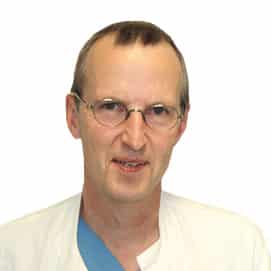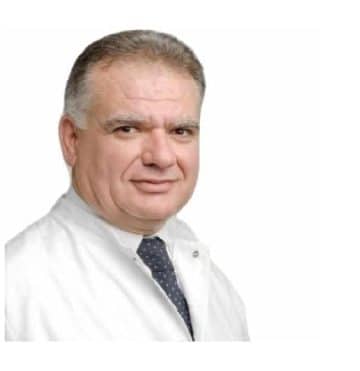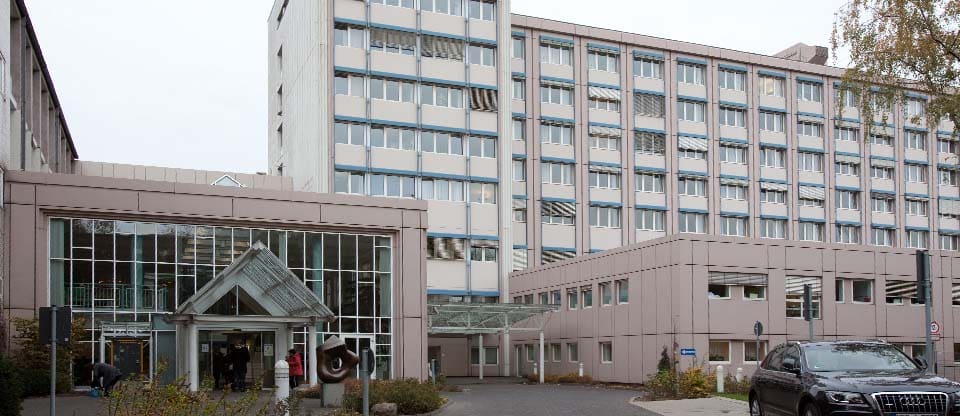An old saying goes: "A man is only as old as his vessels."
Not surprisingly, the process of human aging is accompanied by an increase in the number of vascular diseases. However, they can also occur in younger people. The Vascular Center at the Augusta Clinic was opened ten years ago. This specialized department treats the entire spectrum of vascular diseases, both venous and arterial circulatory systems.
The clinic is distinguished by the fact that it contains under one roof all the special departments that are necessary for the comprehensive treatment of vascular diseases. This, in addition to vascular surgery, includes, first of all, the so-called. interventional radiology and endovascular therapy. Their use in certain situations helps patients avoid major operations, limiting themselves to the use of catheter technologies and vascular supports (stents).
The range of services of the Vascular Surgery Clinic includes surgical and endovascular techniques for the treatment of any arterial and venous vascular areas, from the vessels of the brain to the vessels of the feet.
In addition, depending on the vascular disease, concomitant diseases and anatomical data, purely surgical, a combination of surgical and endovascular ("keyhole surgery") or purely endovascular techniques are selected, which can be performed using new generation X-ray equipment with high resolution in the operation. ability. Vascular surgery operating rooms are generally equipped with high-resolution instruments such as digital subtraction angiography, modern blood flow meters, a somatosensory evoked potential lead meter, and an automatic transfusion pump.
Operations on the vessels of the neck
Violation of blood circulation in the vessels supplying the brain is recognized as the most common cause of death or disability. The professional base of the clinic allows the reconstruction of neck vessels with a small surgical intervention, which, with a very low risk, can prevent a stroke.
One of the main specializations of the clinic is the elimination of pathological processes in the area of the base of the skull, aneurysms of the carotid arteries and the processes of blockage of vessels lying intrathoracically and supplying the brain.
During such operations, the cerebral circulation is constantly monitored, and at the end, by means of an ultrasound examination, the state of the cerebral blood supply is checked and documented.
Operations on the vessels of the abdominal cavity
The predominant operations performed by vascular surgeons are cases of aortic stenting, performed in a minimally invasive manner that does not require opening the abdominal cavity.
For the treatment of patients with congenital and dissecting aortic aneurysms, doctors perform, depending on the case, abdominal or minimally invasive operations.
Circulatory disorders
Along with standard surgical methods (thrombus removal, shunting), modern minimally invasive techniques are often used, such as balloon catheter stretching (percutaneous transluminal angioplasty) or stent placement.
In case of embolism, scalene syndrome or chronic inflammation of the vessels, ribs, thrombotic emboli are surgically removed or long shunts are placed on the arteries of the wrist joint. The patient's veins are used as the material for shunting, sometimes vessels made of artificial materials.
Vein diseases and thrombosis
The variety of clinic services includes surgical treatment of the inferior vena cava, acute thrombosis of the veins of the pelvis or legs, and reconstructive therapy of the venous system for chronic blockages and stenoses. In addition, in the clinic, along with differentiated and increasingly performed in a day hospital, surgery for varicose veins, obliteration of varicose veins is performed, including stripping (a minimally invasive intervention in which the affected vein is removed using a thin probe).
Diabetes
The use of treatments such as catheter dilatation or stenting eliminates circulatory disorders, and in cases of "diabetic foot", bypass to the arteries of the foot or homologous vein grafts can save the limb.
Dialysis and cancer patients
Collaboration with the Nephrology Clinic makes it possible to provide surgical care to patients on dialysis and requiring urgent intervention, for example, the placement of an atrial catheter, an arteriovenous shunt.
Video
Request appointment
Useful links















